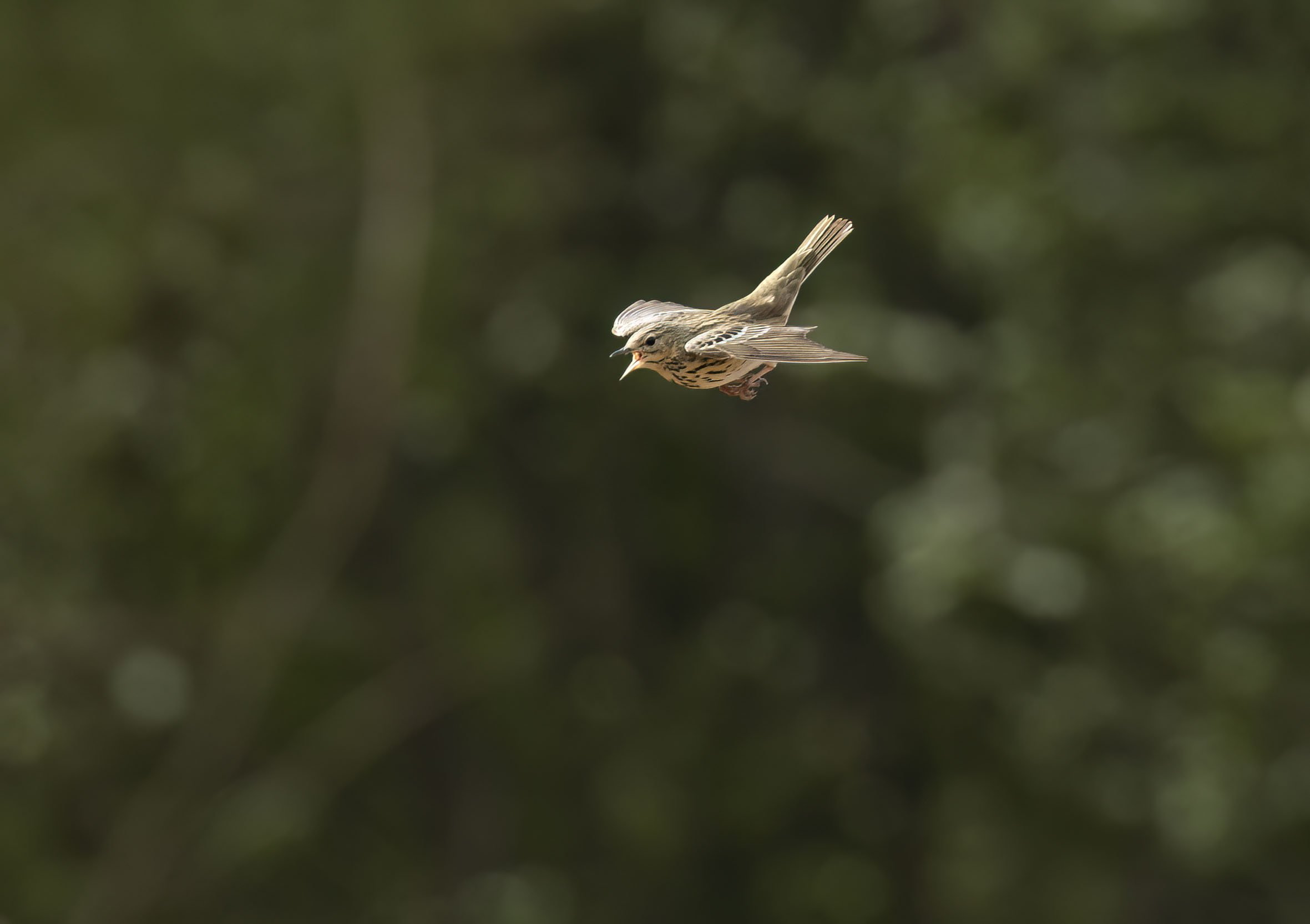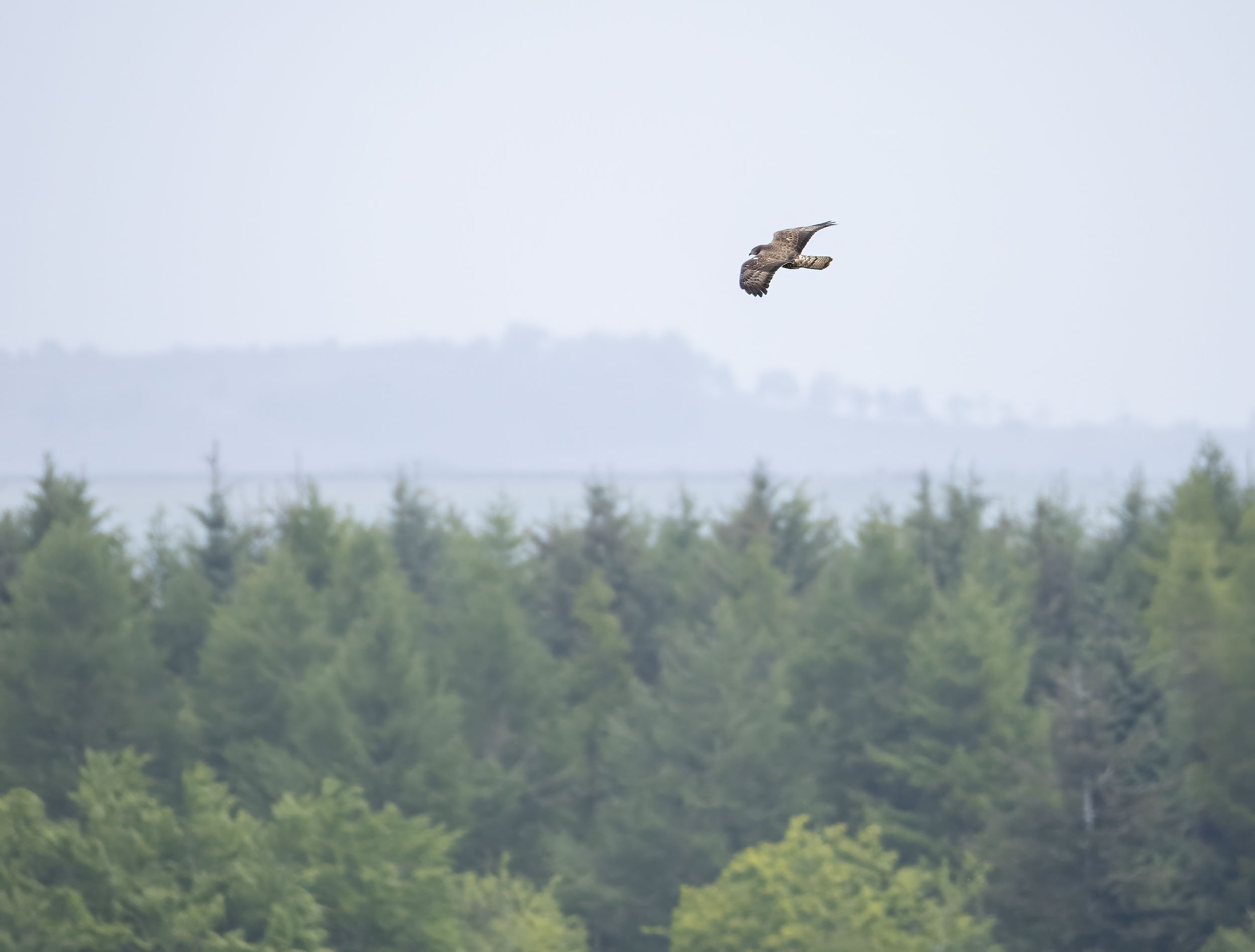Honey-buzzards - reacquaintance with old friends
I have been going up to Wykeham for many years to watch the Honey-buzzards, or at least to attempt to watch them, because as all raptor watchers know nothing is certain or guaranteed and with Honey-buzzards that is doubly so. In 2017 a striking pale male took up residence and I was fortunate after many visits to be in the right place at the right time when he flew past close enough for a decent image (see below). Since 2017 he has returned every year but views have been very varied and photo opportunities even more so with record shots often being the order of the day.
Pale male Honey-buzzard Wykeham, North Yorkshire, July 2017.
The same male produced one of my favourite images in 2018 as he displayed below the raptor viewpoint in Troutsdale - although very small in the frame the image is full of atmosphere and scene setting
and a more standard shot of the male 2018
This is the female from 2018
female in wing-clapping display 2022
So 2025 and after a blank year for sightiongs in 2024 I headed up to Wykeham on 21st in what seemed like less than ideal conditions weather wise; it was cold and cloudy with a fresh northerly but forecast was a bit better. When I arrived at the raptor viewpoint it was decidedly Arctic in nature with a strong Northerly coming straight up the valley but at least the Tree Pipit was in full display and at very close range, a Garden Warbler was in full voice and a few Common Crossbills soon appeared but it was not a good omen for raptor watching - or was it? But not long after arrival I picked up the female coming in from over the newly cleared plantation by the RVP and she performed some nice moves in front of the small crowd albeit in pretty dire light.
Willow Warbler entertained in front of the RVP all day - I loved the perch
Tree Pipit in parachute descent
female and two juvenile Common Crossbills from the RVP
Common Crossbill female
Maybe because of the cold and dull light the birds were sometimes quite low down which has its advantages and you don’t often get shots of the bird’s upperparts - female again
Subtle but intricate patterning even on an essentially brown bird
Beautiful looking bird - I still vividly remember my first ever Honey-buzzards - studying (sort of) at UEA in June 1974 we were sitting on the East Bank at Clew with the late great Richard Richardson on June 18th - three new birds were logged Spoonbill, Kentish Plover and Red-necked Phalarope but in our chat Richard kindly told us about Norfolk’s first Cetti’s Warblers at Surlingham which we managed to twitch two days later and he also gave us a location where we could hopefully see Honey-buzzards in North Norfolk. On June 23rd armed with a few reference books for revision purposes, on the back of Duncan’s motorbike we arrived at the designated track on a lovely sunny day and not long after a beautiful male Honey-buzzard flew out of the nearby wood at about 60 feet up straight down the track towards us and gave us the most superb views. One of those things you never forget and we were back three days later seeing the female as well. Five lifers in six days.
The sun eventually did make an appearance in the afternoon but the birds were usually higher and not as close but I did get this shot of the female with some bluish sky
female watching something - probably the male with his enticing mummified bird’s legs
The male appears to have some central tail feather still growing - here he was receiving some unwelcome attention from a raven - it doesn’t seemthat many years since I reported a pair of Ravens at Wykeham and it was a rare event
From late morning the male was carrying something which was assumed initially to be a frog but closer images revealed it was the legs and feet of a passerine with some very dried up body parts attached - certainly not an apetising looking treat for a potential mate but he clearly had other ideas as he held onto it for several hours and even did some bouts of wing clapping display still holding it in his feet
Although many views were more distant and into bright light persistence paid off when he made one close pass in good light - still a very striking bird and he hs made that return trip to sub-saharan Africa at least 10 times now
Not often that you can get a view of the upperparts and against a woodland backdrop - stunning bird
A balancing act putting the bird in the context of the location and habitat the male over Troutsdale
female out over the valley
male again
a small part of a big landscape
































